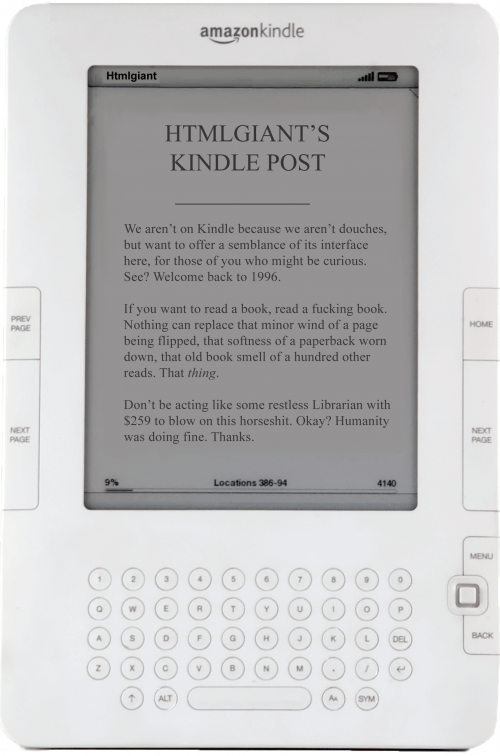
In her article in yesterday’s New York Times, Patricia Cohen reports on Emory University’s efforts to preserve Salman Rushdie’s archive. In addition to the regular files, folders, books, and other paper materials one might expect, Rushdie gave Emory four Apple computers. The school decided to create an emulator that would allow visitors to see–and play with–Rushdie’s work:
At the Emory exhibition, visitors can log onto a computer and see the screen that Mr. Rushdie saw, search his file folders as he did, and find out what applications he used. (Mac Stickies were a favorite.) They can call up an early draft of Mr. Rushdie’s 1999 novel, “The Ground Beneath Her Feet,” and edit a sentence or post an editorial comment.
Pretty neat. I love the idea of interaction and it’s great how technology has allowed for wider audiences to access archival materials. I’ve really been enjoying looking over the David Foster Wallace archive at the Harry Ransom Center, for instance, something made entirely possible through digital archiving. But Cohen’s article also details some of the problems and limitations of the “digital-born” material:
Electronically produced drafts, correspondence and editorial comments, sweated over by contemporary poets, novelists and nonfiction authors, are ultimately just a series of digits — 0’s and 1’s — written on floppy disks, CDs and hard drives, all of which degrade much faster than old-fashioned acid-free paper. Even if those storage media do survive, the relentless march of technology can mean that the older equipment and software that can make sense of all those 0’s and 1’s simply don’t exist anymore.
This got me thinking, again, about all the rosy-toned optimism surrounding e-readers like the Kindle and iPad. Marginalia, annotation, and scholia, whether from the quills of medieval monks, enlightenment scientists, or prickly book reviewers, has long served as a conduit of information and criticism often rivaling the importance of the document being marked. Kindle users can highlight, dog-ear, and annotate their e-texts now, but how permanent are these marginalia–especially when Amazon has already shown how easily the books can be removed from their owners (along with those owners’ notes!)? Given Apple’s penchant for DRM, it’s likely that you won’t be able to trust the iPad to secure your annotations either. And while my own paltry scribblings in the volumes I own are hardly on par with Coleridge’s annotations, the books that I have most heavily annotated are also those dearest to me. At best, my marginalia might call attention to some notable aspect of a great text; at least, they record something about the person I was when I saw fit to write in the book at that moment.


